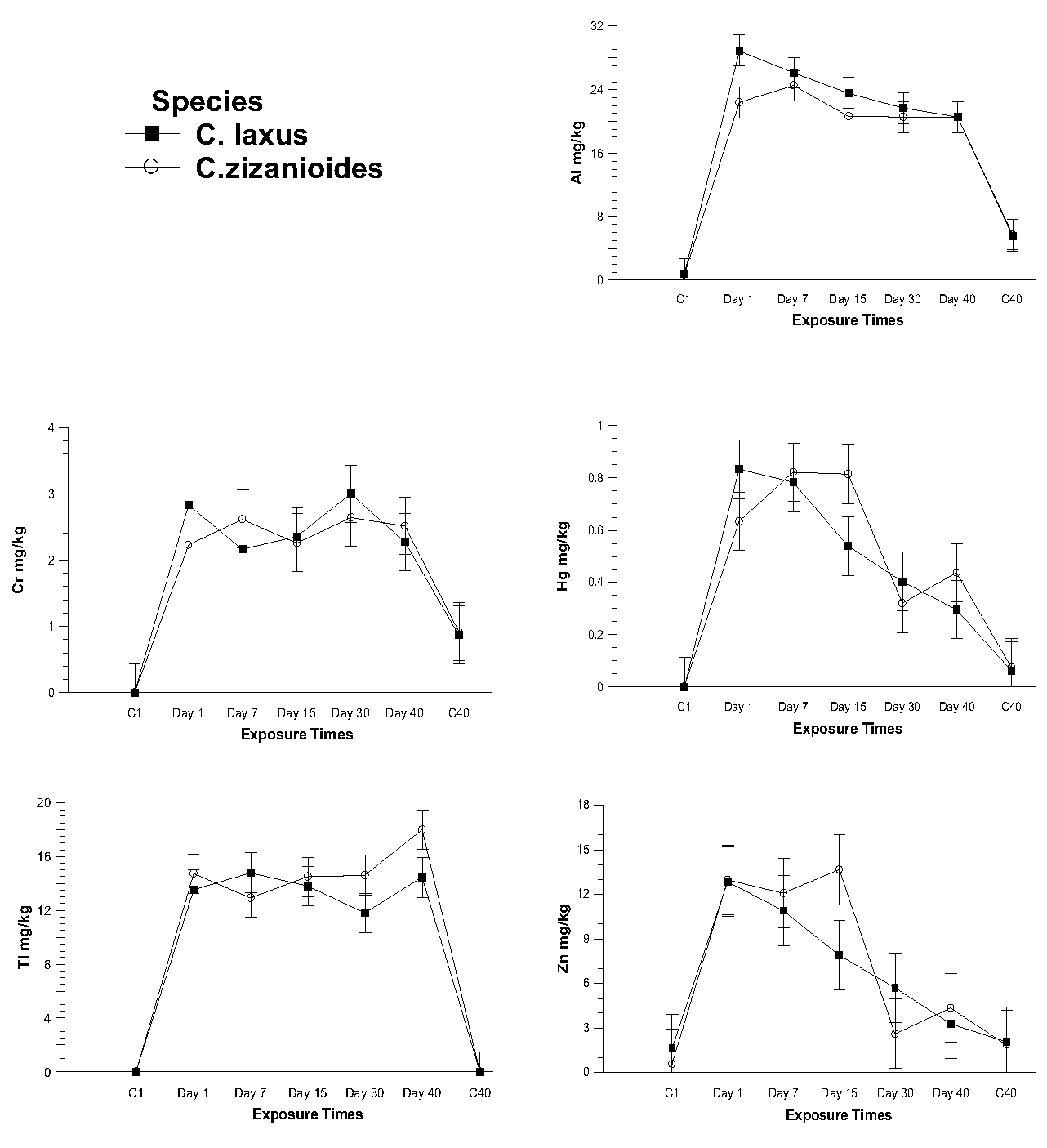 |
|
This study aimed to evaluate and compare the phytoremediation potential of Cyperus laxus and Chrysopogon zizanioides, exposed to a mixture of leachates containing heavy metals. C. laxus is a native species from Mexico and C. zizanioides is an introduced species. Exposure to the leachate was performed using concentration kinetics concerning exposure times (TE) (Control 1, Control 40, 1,7, 15, 30, and 40 days). For this purpose, a completely randomized two-factor design with a 2x7 arrangement in triplicate was performed. The data were analyzed by ANOVA followed by an LSD multiple range test. For the quantification of metals in leachate and plants, inductively coupled plasma atomic emission spectroscopy (ICP-OES) was used. Ten chemical elements (Al, As, Ba, Cr, Hg, Ni, Pb, Se, Tl, and Zn) were identified in leachate and plants. It was observed that C. laxus absorbed mostly Al, Ba, Cr, Cr, Hg, and Ni, while C. zizanioides absorbed As, Pb, Se, Tl, and Zn. In translocation factor (TF) calculations C. laxus translocated only As, whereas C. zizanioides translocated As>Tl>Ba>Cr>Ni, respectively.
Keywords: phytoremediation, native plant, introduced plant, translocation factor, sanitary landfill.
|
|
 |

